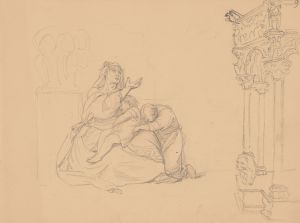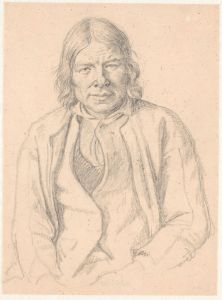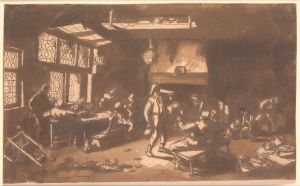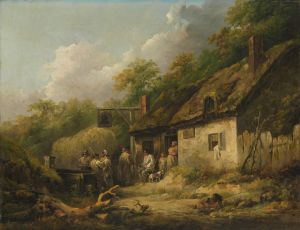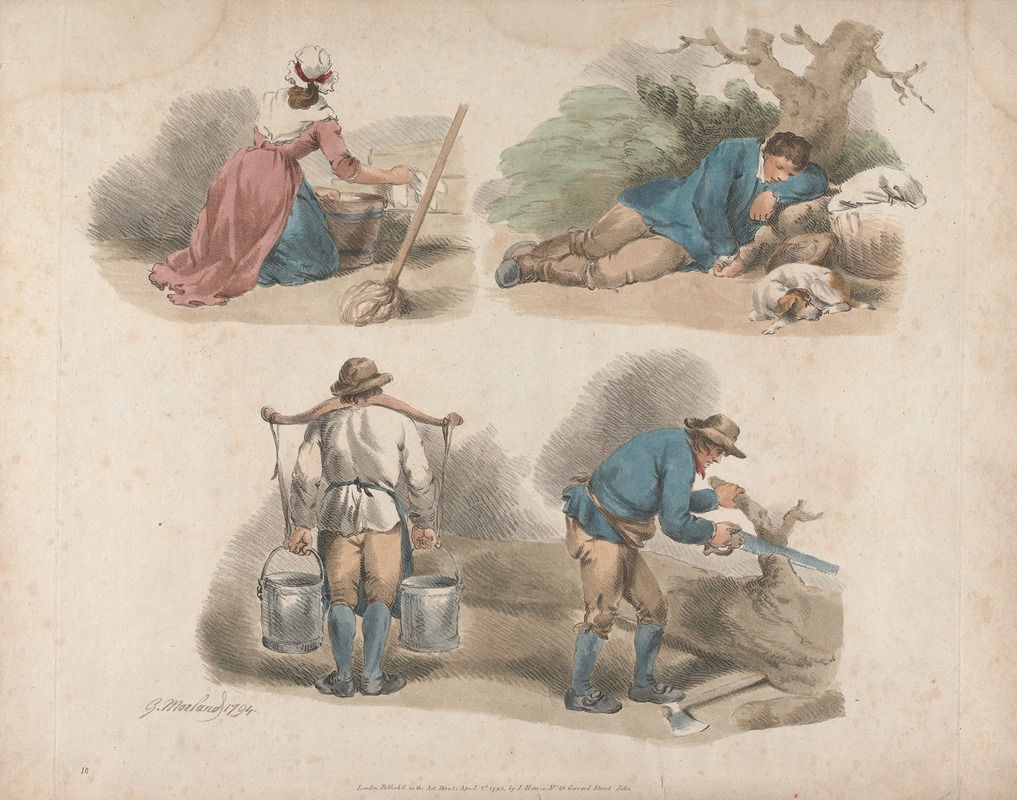
Studies of Laborers
A hand-painted replica of George Morland’s masterpiece Studies of Laborers, meticulously crafted by professional artists to capture the true essence of the original. Each piece is created with museum-quality canvas and rare mineral pigments, carefully painted by experienced artists with delicate brushstrokes and rich, layered colors to perfectly recreate the texture of the original artwork. Unlike machine-printed reproductions, this hand-painted version brings the painting to life, infused with the artist’s emotions and skill in every stroke. Whether for personal collection or home decoration, it instantly elevates the artistic atmosphere of any space.
George Morland was an English painter, renowned for his depictions of rural scenes and everyday life during the late 18th and early 19th centuries. His works often focused on the lives of common people, capturing the essence of rural England with a sense of realism and empathy. One of his notable works is "Studies of Laborers," which exemplifies his interest in portraying the working class and their environment.
"Studies of Laborers" is a painting that reflects Morland's keen observation of the daily lives of laborers, a subject that was not commonly highlighted in the art of his time. Morland's ability to depict the dignity and hardship of laborers with authenticity and respect set him apart from many of his contemporaries. His works often carried a narrative quality, providing insight into the social conditions and the human experience of the era.
The painting is characterized by Morland's typical style, which includes a naturalistic approach and a focus on detail. He was known for his ability to capture the textures of the environment, whether it be the roughness of a laborer's hands or the worn fabric of their clothing. This attention to detail helped convey the reality of the laborers' lives, making the viewer acutely aware of their struggles and perseverance.
Morland's use of color and light in "Studies of Laborers" also contributes to the overall impact of the painting. He often employed a muted palette, which added to the somber mood of his scenes, while his use of light helped to highlight the central figures, drawing the viewer's attention to their expressions and actions. This technique not only emphasized the subjects but also created a sense of intimacy and immediacy, inviting the viewer to engage with the scene on a personal level.
The context in which Morland created "Studies of Laborers" is significant. During the late 18th century, England was undergoing significant social and economic changes, with the Industrial Revolution beginning to alter the landscape and the lives of its people. Morland's work can be seen as a response to these changes, capturing a way of life that was rapidly disappearing. His paintings serve as a historical record, preserving the image of rural laborers at a time when their traditional roles were being transformed by industrialization.
George Morland's personal life was as colorful as his paintings. Despite his talent and success, he struggled with financial difficulties and personal issues, which often overshadowed his artistic achievements. Nevertheless, his ability to portray the human condition with empathy and realism has ensured his place in the history of British art.
"Studies of Laborers" remains an important work within Morland's oeuvre, reflecting his commitment to depicting the lives of ordinary people with honesty and respect. It stands as a testament to his skill as an artist and his understanding of the social dynamics of his time. Through this painting, Morland not only captured the essence of rural labor but also contributed to the broader narrative of British art, highlighting the significance of everyday life and the dignity of work.





